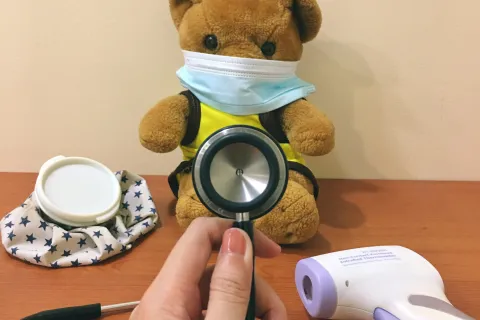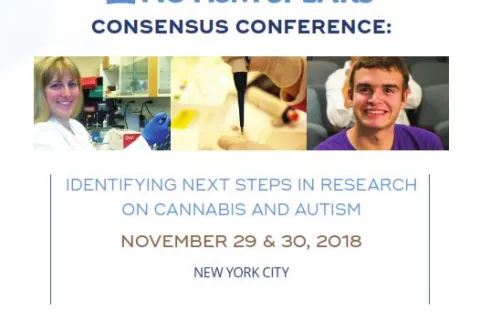How the autism community guided the FDA

On May 4, 2017, Stuart Spielman, Autism Speaks’ senior policy advisor and counsel, and Thomas Frazier, Autism Speaks’ chief science officer participated in a public meeting and panel discussion on Patient-Focused Drug Development in Autism, held by the U.S. Food & Drug Administration (FDA). Both are parents of children severely affected by autism.
In the following Q&A, they discuss the importance of the FDA meeting and the resulting report, “The Voice of the Patient: Autism.” (Follow the title link to read and/or download the full report.)
Why was it important for the FDA to hold a public meeting on patient-focused drug development for autism?
Dr. Frazier: Increasingly, the research community recognizes that we need to hear from the full range of stakeholders – including people with autism and their parents – in order to design studies that address their needs in meaningful ways, while being sensitive to what they like or don’t like in research.
By holding this meeting, the FDA is showing leadership in this inclusive approach and demonstrating to the research community how stakeholders can be included.
During the meeting, it became clear that the FDA truly wanted a full range of opinions, and where possible, some consensus about community priorities. In addition, the agency wanted information about people’s experiences with currently available psychiatric medicines as well as their experiences participating in clinical trials of new medicines and approaches.
From my perspective, everyone felt heard and had a chance to express opinions and describe experiences. I felt there was sincere engagement and appreciation for the opinions of people with autism, their parents and other caregivers and advocates.
Mr. Spielman: We all share a common interest in improving the lives of those affected by autism. The first step toward that goal for any federal agency is listening to the voices from the community. By holding a public meeting, FDA gained vital information and gave the community an opportunity to meet the people behind the agency’s work.
What did the FDA learn about the research priorities of the autism community?
Mr. Spielman: Perspective and urgency. How autism is viewed depends on the vantage point of the viewer. As the parent of a young adult affected by autism, I worry about behaviors that can endanger my son or diminish his ability to take care of himself. Others may see autism differently, but we all agree that FDA must prioritize our community’s perspective in its work.
Dr. Frazier: The agency learned several things. I particularly remember the feedback they got on repetitive sensory motor behaviors – what we often call ‘stimming,’ or self-stimulatory behavior.
Many self-advocates at the meeting were not especially concerned with their “self-stims,” but did want treatments that addressed co-occurring conditions like mood and attention difficulties. Parents expressed the need to address dangerous behaviors that commonly accompany with autism – such as wandering or bolting, aggression and self-injury.
So now, when researchers come to the FDA for guidance on developing “target goals” for a study evaluating a new treatment, the agency might steer the researchers against a goal such as “reduction of self-stimulatory behaviors” and toward the areas of need emphasized by people with autism and their families.
The meeting also touched on the value of better measurement of autism symptoms and related levels of function in daily life. Many stakeholders made it clear that current measurement instruments [clinical checklists and rating scales of autism symptoms] seem inadequate. They want us to focus more on the skills and challenges that matter to them and to find better ways to evaluate them. For me, this was an unexpected but welcome conversation made possible by the wonderfully open-ended nature of the discussion that day.
What did the FDA learn about the autism community’s experience with medicines for people with autism?
Mr. Spielman: As far as medication is concerned, we let them know that the cabinet can be rather bare. Our choices can be few, and what medications we have work poorly or not at all for many people. We also let the FDA know that cost can be an issue in accessing these medicines, and that we worry about their long-term effects. At the same time, our discussion reflected a sense of hope that future treatments will address autism’s most disabling features and associated health conditions.
Dr. Frazier: I remember hearing a wide range of opinions – from very positive to very negative when it came to the psychiatric medications used for autism. Some parents described these medicines as “life-saving” because they reduced the frequency and intensity of severe and truly dangerous challenging behaviors.
Other people described how these medicines dampened their personality, reduced their motivation and made them feel tired.
Overall, most of the parents and self-advocates emphasized the dire need for psychoactive medicines that have fewer and milder side effects, as well as medicines that increase function in the areas that are most critical to everyday life – such as communication, cognitive skills, and so on.
How can the FDA use the findings in this workshop report to directly help people with autism and their families?
Dr. Frazier: One of the most valuable takeaways from this meeting is that the FDA can now give researchers clear guidance on designing clinical trials to achieve what matters most to patients. For example, the FDA can advise a researcher that improving communication is a more important goal than, say, reducing repetitive sensory motor behaviors.
Similarly, the FDA can encourage autism researchers to include the improvement of co-occurring health conditions in their studies rather than focusing only on autism’s core symptoms.
I also think the conversation at the meeting is going to spur researchers and funding agencies to improve how we measure the benefit of a new approach in a clinical study. This includes developing more-objective measures that are less influenced by the bias of the person evaluating a subjective change in, say, behavior or function. It also includes a wider range of outcome measures that reflect the real-life needs and desires of people who have autism and their families.
Together this kind of feedback can lead to welcome advances in how we help people with autism, beginning with clinical trials designed to have the highest possible value to the autism community.
Mr. Spielman: The workshop and report are the beginning of what I hope will be a long-term relationship between autism advocates and the FDA. The agency plays a critical role in developing treatments that improve health and well-being. It’s heartening that it has opened the doors to us and are responding in a transparent and accessible manner to the community’s many voices. As advocates, we should applaud these efforts and work to give FDA the resources it needs to better serve our community.








